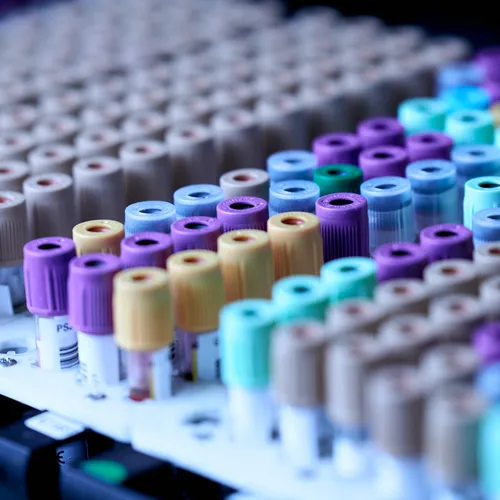Hair alcohol testing
Hair alcohol testing is usually required for court to prove abstinence from alcohol. As a result, laboratory reports from this alcohol test are court admissible. In addition, it has an effective alcohol detection window depending on the length of hair available. Hair alcohol testing is a popular choice for family court and legal matters.

How does hair alcohol testing work?
Information regarding hair alcohol testing can be difficult to understand. As such, please remember that you can call and speak to a Clinical Advisor to explain the following terms and definitions.
As hair grows, alcohol markers such as Fatty Acid Ethyl Esters (FAEEs) and Ethyl Glucuronide (EtG) can be absorbed and bound into the hair strand. Long term excessive consumption of alcohol would cause elevated FAEE.
In addition, we also analyse EtG levels to give the best overview of a person’s alcohol consumption. This is because both can be affected by environmental factors. EtG is formed in the liver, and is only produced when alcohol has been consumed. In turn, EtG is then deposited into the hair, mainly from sweat. Therefore, a higher level of EtG being detected in the hair would indicate that more alcohol has been consumed.
Frequently Asked Questions
What are the hair alcohol testing time-frames?
Hair alcohol testing can detect alcohol for a period of up to 6 months. But this does depend on the length of hair that the sample donor has available, and the condition of the hair. 1 cm of head hair will show approximately one month of use.
If no head hair is available, we can only test body hair taken from certain parts of the body. For instance, we cannot use underarm hair for the analysis. The period shown by 1 cm of body hair is approximately 2 to 3 times longer than 1 cm of head hair.
We take in to consideration the time it takes for alcohol to move from the blood to the hair follicle. On average, it takes alcohol 7 to 10 days to break down in the body and move into the hair strand.
Once alcohol has moved from the blood into the hair strand, we detect it using hair alcohol testing. However, there are limitations to hair alcohol testing and you must speak to a Clinical Advisor about these. Furthermore, technical information on hair growth is available from the Society of Hair Testing.
What happens at the appointment for a hair alcohol test?
We identify the sample donor at the appointment, using photographic identification. Next, we collect the hair sample. This is then sealed and bar coded. The entire collection process follows strict chain of custody procedures. For instance, you will need to sign consent to have your hair sample tested. Also, you will witness the sample collector tamper proofing your hair sample.
We cut the hair samples using scissors. Or a razor for body hair samples. We can take this from the head or certain areas of the body. But we do recommend the use of head hair due to biological factors that influence the hair growth rate. You can speak to a Clinical Advisor to understand the limitations for some types of hair.
Regardless of the hair origin, we only need a small amount of hair for the analysis. This means that the area of collection of hair is usually unnoticeable.
Finally, we will issue your test report within three to five working days of receiving your sample. Usually, this is only three working days. Also, the cost of the hair alcohol test includes the test results package.
Hair alcohol testing is available at our UK clinics. Alternatively, you can request a mobile collection officer to attend your location.
What is the cost of the hair alcohol test?
The cost of a hair alcohol test starts from just £536, which includes both FAEE and EtG analysis.
If required, we can also provide an Expert Witness Statement for an additional £186, offering detailed information about the results.
All prices quoted are inclusive of VAT.
What are the reporting guidelines for hair alcohol testing?
The reporting guidelines are as follows:
- lower than 5pg/mg = suggestive of abstinence
- between 7 – 30pg/mg = suggestive of alcohol use
- higher than 30pg/mg = suggestive of chronic excessive alcohol use
For example, if the amount of FAEE detected in the hair sample is above the cut off level of 750pg/mg (picogram per milligram), this could suggest that alcohol has been consumed at a chronic level.
Also, we do recommended that a blood alcohol test is performed in combination with hair alcohol testing. This could give a more accurate picture of a person’s alcohol consumption.
When should the hair alcohol test be used?
Hair alcohol testing will verify if a person has been abstinent from alcohol. Or, if they have been consuming alcohol that has not been at a chronic excessive level. The test is ideal in the following circumstances:
- Social Service matters.
- Family Court matters.
- Evidence of abstinence.
Also, we recommend that an Expert Witness Statement is requested to give a further understanding of the test report. This can be discussed at the time of your booking.
In addition, we can take extra hair samples if a hair drug test is also needed. We can undertake a hair drug test in combination with the alcohol analysis if requested by court or social services.
Hair alcohol testing is also suitable for the workplace. For example, for specialist agencies or in circumstances that need evidence of abstinence.
How can I book an appointment for the hair alcohol test?
The easiest way to book an appointment is by calling 0800 988 7107 and speaking to our team. Or, you can email [email protected]
Whatever method you choose, we will guide you through the process and get you booked in as quickly as possible.
Local drug testing clinics, and mobile locations throughout the UK
For your convenience, we have a network of drug testing clinics throughout the UK. As a result, we can provide drug and alcohol test appointments for you in your local area. Or we can arrange for a certified sample collection officer to visit your home, workplace, or other location.
Our Headquarters
Crystal Health Group
The Old Chapel
Manchester
M30 0NG




